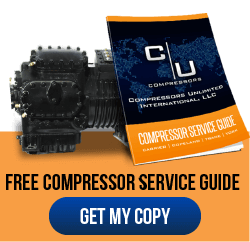Air quality might seem like a nebulous concept, but it is simpler than it sounds. A building with good air quality limits the spread of airborne pollutants, whether it’s dust, industrial byproducts, or pathogens. By reducing the spread, air quality helps to ensure employees and the public are protected.
What Happens When You Have Poor Air Quality in a Building?
Research has shown that indoor air can be many times more polluted than outdoor air. Americans will spend about 90% of their time indoors on average, and some pollutants can be two to five times higher in concentration indoors than outside. That can have a big impact on human health.
Obviously, we’ve all learned a thing or two about the transmission of airborne viruses indoors. With flu season getting longer, a significant respiratory illness can circulate for more than half the year. But even when circulation is low, the indoor environment can be perilous when air quality is poor.
“Sick Building Syndrome” is the term given to symptoms of apparent illness that present when someone is indoors in a particular building, then quickly goes away upon leaving that environment. Though it was first documented in the 1970s, many experts initially thought it was psychosomatic.
More recent studies have shown that Sick Building Syndrome is not always, or even usually, in your head. Instead, it’s the result of the accumulation of indoor pollutants in a structure and overwhelming airflow provided by the HVAC system.
People who regularly work in a “sick building” are far more likely than average to use sick time, and they will honestly report feeling better when they are away. This, plus the symptoms they’ll experience while they are present on the job, can cost the equivalent of thousands of productive hours a year.
Your Commercial HVAC System Is Your Main Tool for Better Indoor Air Quality
Many institutions invested in advanced technology to improve their indoor air quality in 2020 and 2021. For example, you’ve probably heard about UV light filters intended to destroy circulating bacteria if the pathogens find their way into the ductwork. Innovations like this can be very effective.
In the long run, though, 90% of the work you need to put in for great indoor air quality is addressed by the fundamentals of your HVAC system. Even if you have inherited an older HVAC system that isn’t at a peak level of efficiency, you can still achieve results that will keep your building occupants comfortable.
Let’s look at the main things to keep in mind:
1. Maintain Your Commercial HVAC Compressor Regularly
Without a functioning commercial HVAC compressor, your system will go down, no matter how well-designed it is. Commercial compressor maintenance is broken down into weekly, monthly, quarterly, and annual steps, so be certain you are prepared in advance. Document all routine maintenance, plus changes and updates, so you can recognize the signs of recurring issues.
2. Keep Commercial HVAC Compressor Spare Parts on Hand
Having the right spare compressor parts on hand makes the difference between a situation that brings your HVAC system down for days and one you can resolve within an hour. Compressor engineers, such as your local compressor remanufacturers, can help you acquire the parts you need at a lower price. It’s also easier to learn what parts might be of use to you when you can ask the experts directly.
3. Have a Backup Commercial Compressor Ready to Go
Even when your indoor air quality is generally good, your building can become all but uninhabitable in hours should the HVAC fail. No matter whether the environment becomes stifling hot or freezing cold, it’s bad news for everyone involved. A remanufactured commercial compressor makes it easier for any organization to afford redundancy by cutting the cost of a compressor unit by 10%, 20%, or more.
4. Keep Air Ducts and Air Duct Filters Clean
Your ductwork is a key contributor to the air quality in any facility. Older structures, especially those deemed historic, might have narrow ducts that don’t conform to today’s standards. Even if you’re not able to upgrade your ductwork, you can keep it all working at peak efficiency by carefully following a regular replacement plan for your filters. Most filters are intended for replacement once a quarter.
The genie is out of the bottle on indoor air quality, and it’ll continue to be a consideration for years to come. Know your system and equipment well and you can help others to breathe easier.












